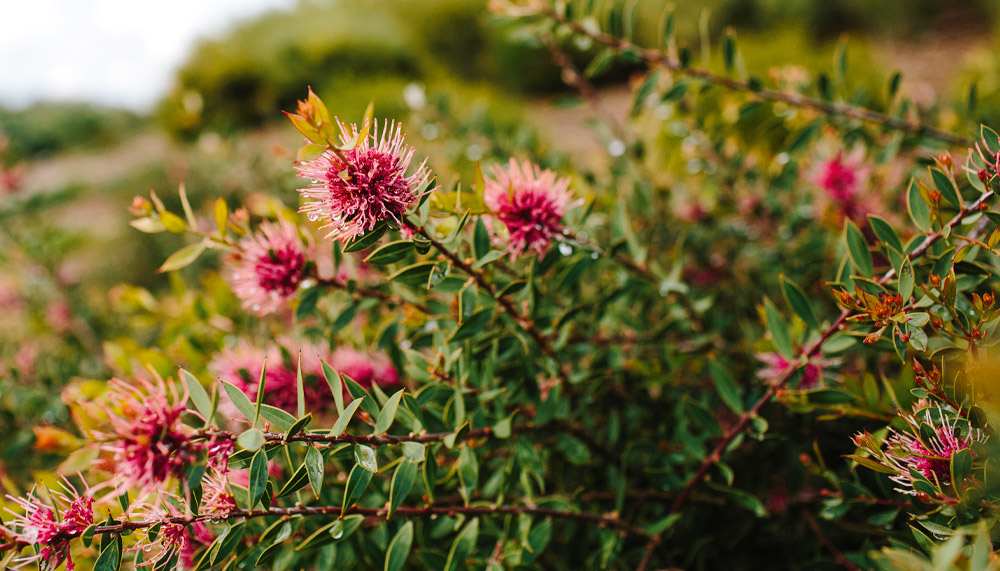The Shepparton community has transformed a garbage dump into a new botanical experience.
Story Terri Cowley Photos Liz Arcus
Jill Grant walks to the top viewing point and takes in a 360-degree vista around her as the sun sets. To her right, in the southerly distance, she can see the purple smudges of the Strathbogie Ranges; to her left, brimming wetlands with a red-gum forest backdrop. In front, a patchwork of plantings and other design elements depict the massive changes in the local landscape due to irrigation, while behind there is a path scattered with walking families under a huge Dethridge wheel, a relic of irrigated agriculture fashioned into a huge lone flower on the lookout.
This is the Australian Botanic Gardens at Shepparton and it used to be a tip – literally. In the 1970s and ’80s residents trundled out of town to dump their garbage down a dirt road at the local landfill. By the late 1980s the tip was full and, with the initial aim of protecting the cap on top, community groups embarked on an ambitious plan to reclaim the site as a garden. It wasn’t until 2011, however, that the transformation began.
Jill is president of the Friends of the Australian Botanic Gardens Shepparton, which has spent the intervening years painstakingly planting out and watering the 22.5ha site, with the help of Greater Shepparton City Council and other groups, including a work for the dole program. Jill says the gardens have now become “a place that the community recognises as theirs”. A Children’s Garden features recycled installations designed to encourage imaginative play, such as a bedspring cubby, interactive puzzles and a sandpit. “It’s a place for education because it shows what you can do with recycling as well as cleaning up the bush,” she says. “It’s a great place to sit and have some peace. It’s a safe, comfortable place.”
Other garden areas include the Weaving Garden, with plants used in the traditional Indigenous craft of weaving and involving weavers from the local Kaiela Aboriginal Art Gallery, and the Turtle Garden, a meeting place at the entrance featuring the endemic eastern long-necked turtle made from stone, old tires and pavers. There are short walks and longer tracks around ephemeral billabongs fringed with native grasses and leading towards the Broken River through stands of grey box, yellow box and bull oak. A woodland circuit winds through a floor of native daisies, buttercups, billy buttons and river bluebells, depending on the season. Interpretive signs feature the rare and seasonal flora and fauna of the area.
The gardens are described as “a new generational botanical experience” unlike what you might see in the perfectly manicured, showy botanic gardens of large cities. Here, it’s native shrubs such as wattles, grevilleas, saltbush, blue flax lily, silver cassia and common everlastings, sprouting among tussock grass. “There’s always a bit of colour, people just have to look for it,” Jill says.
This story excerpt is from Issue #132
Outback Magazine: Aug/Sep 2020










